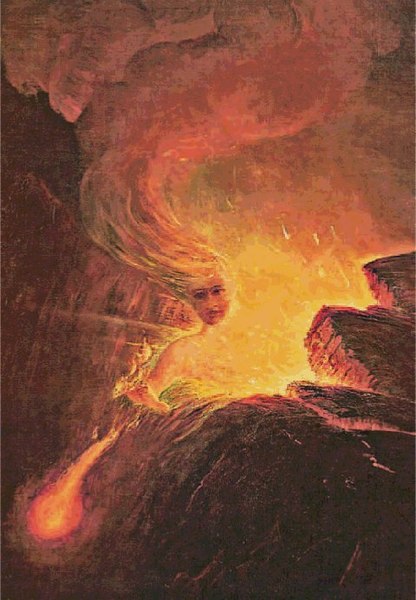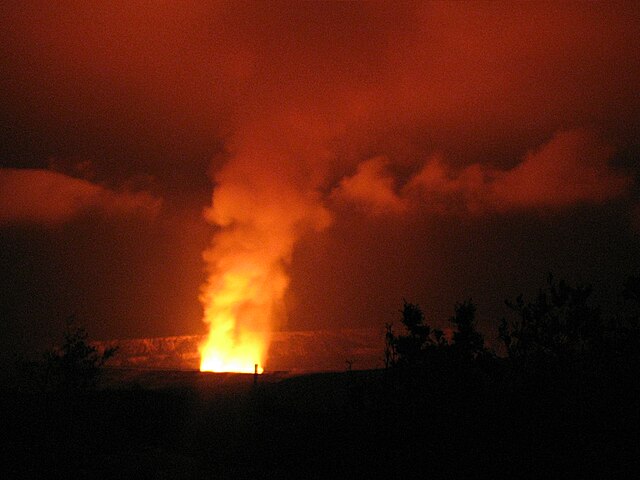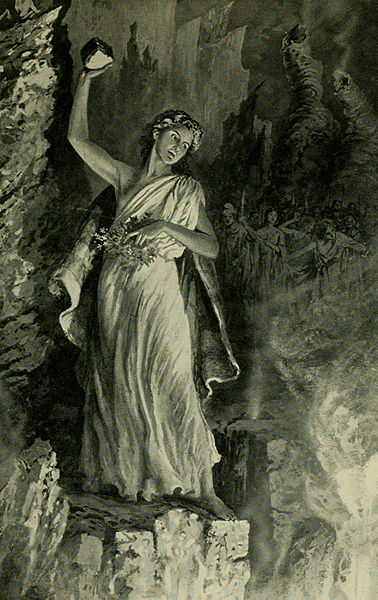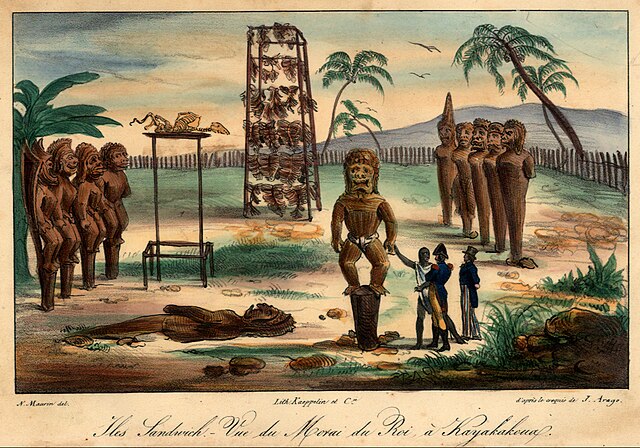In Hawaiian religion, Pele is the goddess of volcanoes and fire and the creator of the Hawaiian Islands. Often referred to as "Madame Pele" or "Tūtū Pele" as a sign of respect, she is a well-known deity within Hawaiian mythology and is notable for her contemporary presence and cultural influence as an enduring figure from ancient Hawaii. Epithets of the goddess include Pele-honua-mea and Ka wahine ʻai honua.
Pele by D. Howard Hitchcock, c. 1929
According to legend, Pele lives in Halemaʻumaʻu of Kīlauea in Hawaiʻi Volcanoes National Park.
Kapiʻolani defying the volcano goddess Pele
Pele's hair, a volcanic glass in strands
Hawaiian religion refers to the indigenous religious beliefs and practices of native Hawaiians, also known as the kapu system. Hawaiian religion is based largely on the tapu religion common in Polynesia and likely originated among the Tahitians and other Pacific islanders who landed in Hawaiʻi between 500 and 1300 AD. It is polytheistic and animistic, with a belief in many deities and spirits, including the belief that spirits are found in non-human beings and objects such as other animals, the waves, and the sky. It was only during the reign of Kamehameha I that a ruler from Hawaii island attempted to impose a singular "Hawaiian" religion on all the Hawaiian islands that was not Christianity.
A depiction of a royal heiau (Hawaiian temple) at Kealakekua Bay, c. 1816
Kailua-Kona, Island of Hawaii
Kū, Hawaiian God of war
King Kamehameha II








